Sony SRX-R220, LSM-100, LMT-100, SRX-R210 User Manual
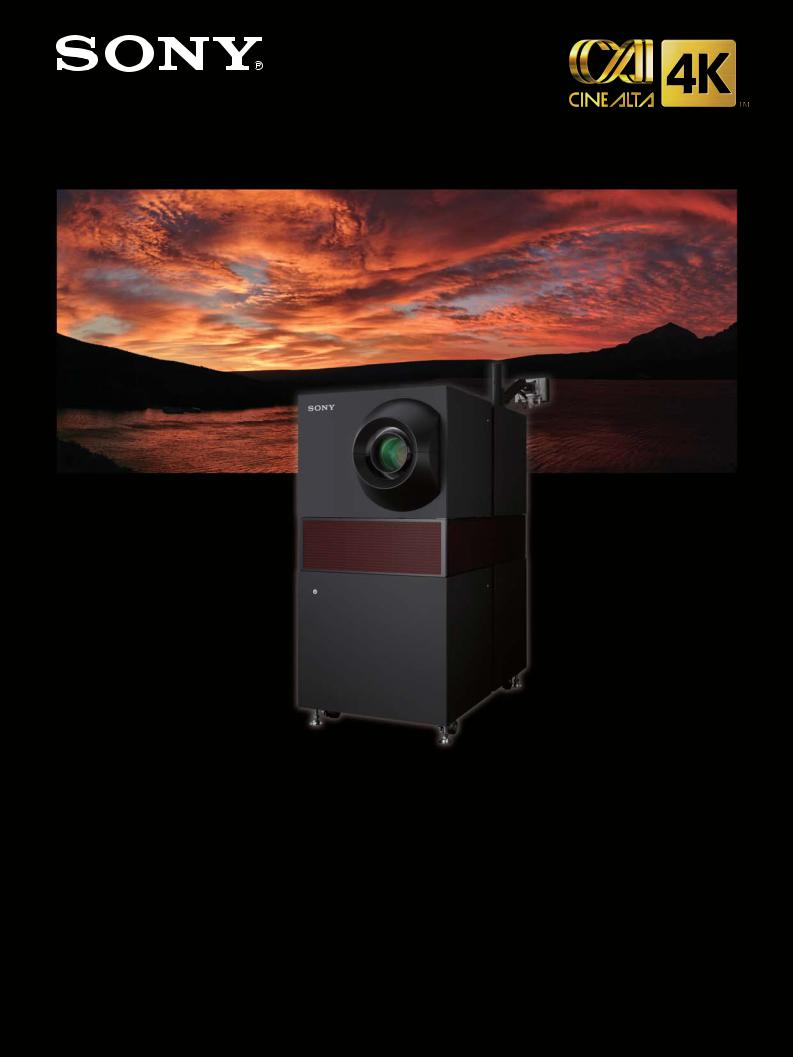
4K Digital Cinema Projectors
SRX-R220/SRX-R210
Media Block
LMT-100
Screen Management System
LSM-100
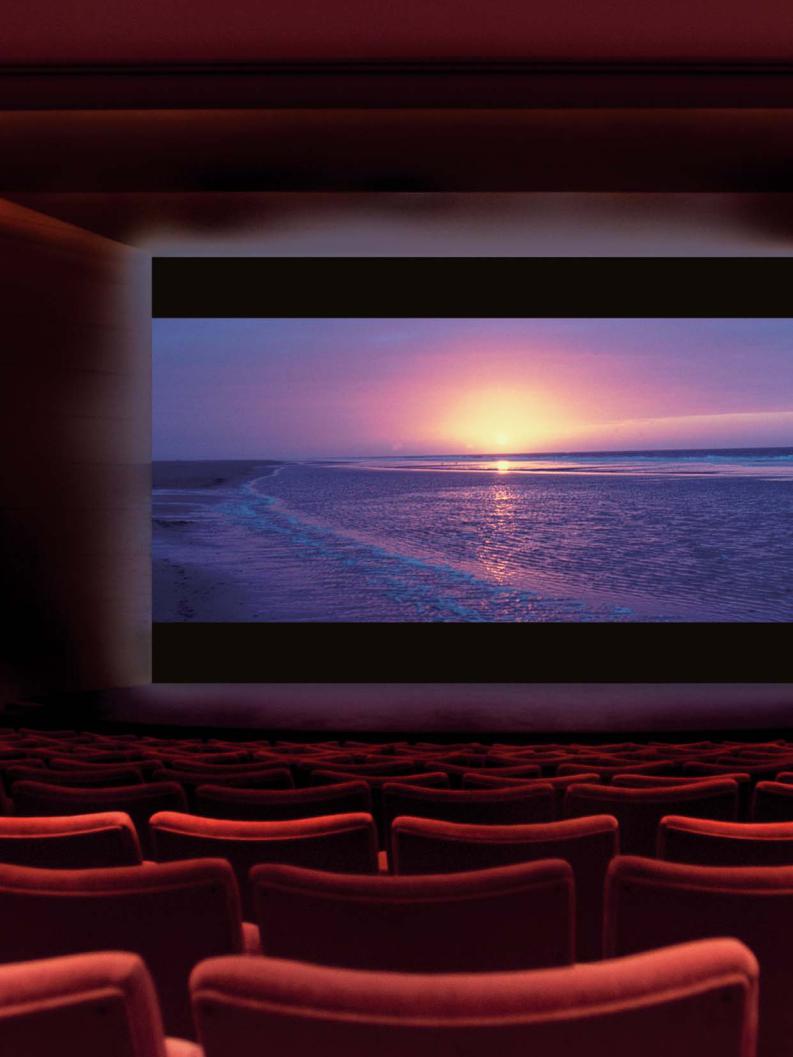
The Combination of “4K” Visuals With a 2000:1 Contr Enclosure Provides a Desirable Solution for the Digital
2
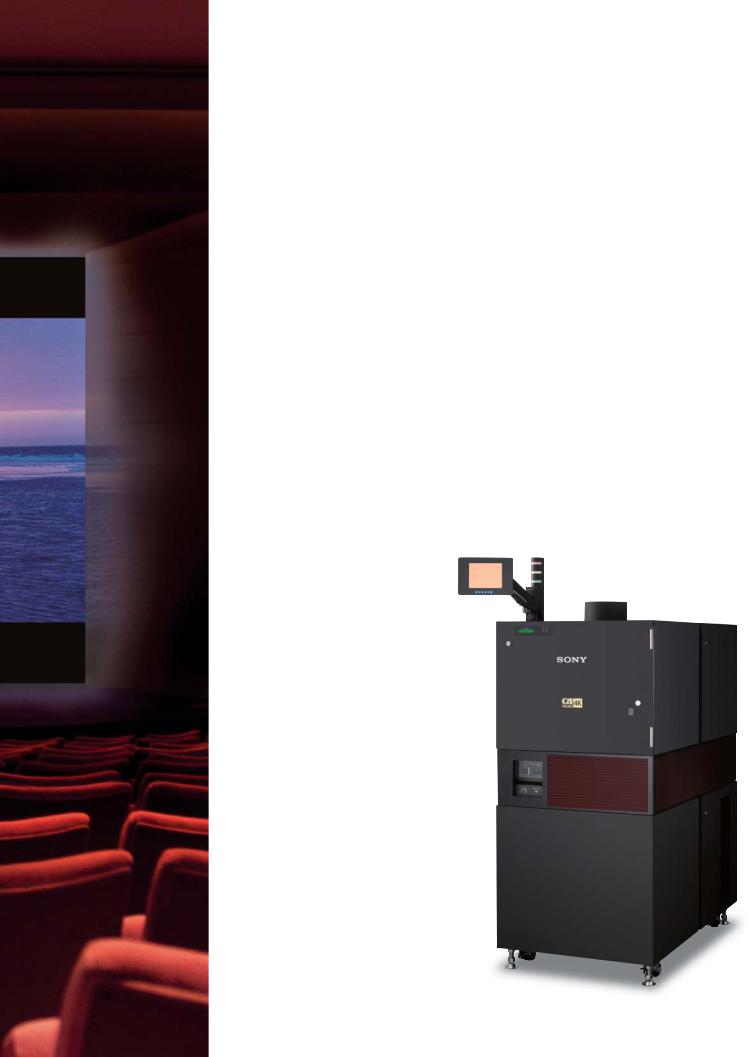
ast Ratio and a Highly Secure, Self-contained
Cinema Age.
Sony is proud to introduce an ultra-high-resolution projector system designed specifically for digital cinema applications.
This projector system consists of the SRX-R220/SRX-R210 Digital Cinema Projector, the LMT-100 Media Block, and the LSM-100 Screen Management System, which are used with peripheral equipment such as RAID (Redundant Arrays of Inexpensive Disks) storage, an SMS Server, and an Uninterruptible Power Supply system.
The core component of this system, the SRX-R220 and SRX-R210 projectors, are equipped with three Silicon X-tal Reflective Display (SXRD™) imaging devices, delivering an amazing resolution of 4096 x 2160 pixels (H x V) - more than four times the resolution of full HDTV (1920 x 1080, 16:9 widescreen format). The SXRD devices also provide a SMPTE-standard brightness level: 14 ft-L* on a 20-meter (65.6-foot) wide screen for the SRX-R220 and a 17or 14-meter (55.8- or 45.9-foot) wide screen for the SRX-R210**, along with a high contrast ratio of 2000:1.
One of the major characteristics of these projectors is their enclosure design, which can accommodate additional necessary components into their body, such as RAID storage and a power management system. This self-contained design realizes a high security level that meets the SPB-2 anti-tamper regulation stipulated by the Digital Cinema Initiatives, LLC (DCI). It also provides significant space-saving benefits when installing the projectors.
Various optional lenses are available for the SRX-R220/SRX-R210 projector, which enables it to be used in a wide variety of theatres with many different throw distances.
The other important components of this projector system are the LMT-100 Media Block and LSM-100 Screen Management System which, in combination with the SRX projectors, establishes a highly secure digital cinema projection
system. The LMT-100 Media Block is a digital cinema server that can play back DCI DCP (Digital Cinema Packages) files. The LSM-100 Screen Management
System provides a variety of screen management operations such as show scheduling, communication with other theatre control systems like lighting and curtains, and control the SRX projectors and Media Block. Moreover, this software also has various functions to prevent illegal copying, such as the monitoring of cavity security sensors on the enclosure, security key management, and diagnostic log management of security events.
With extremely high resolution, high-quality color tonal reproduction resembling film, and outstanding security, the Sony digital cinema projector system based on the SRX-R220/ SRX-R210 4K projector is an ideal solution digital cinema applications.
*Measured at the screen center of a full pixel size (4096 2160) projection with 100 IRE white and a screen gain of 1.8. A ft-L (foot-lambert) is a unit of measurement
luminance. One foot-lambert equals 3.4262591 candelas per square meter.
** Tentative
Display Not Included
3
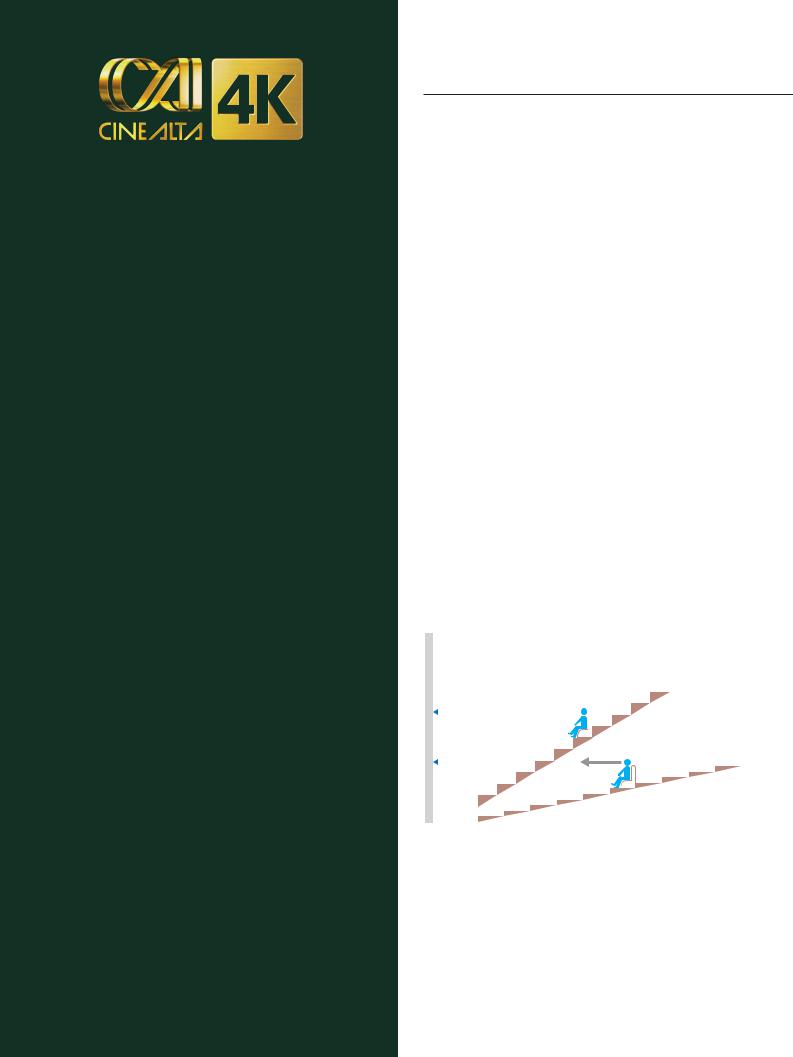
CineAlta 4K™
Experience the Difference
With True 4K Digital Cinema
In 1999, Sony introduced a totally new concept for moviemakers to provide a new higher level of picture quality, efficiency, and flexibility in production processes – digital cinema production.
Sony’s new approach was to produce movies in a high-definition (HD) progressive video format at
24 frames per second using digital video tape media. This concept, together with the Sony products that enabled it, was named CineAlta™ – and it has been embraced by an ever-broadening spectrum of producers, directors, and cinematographers all over the world. A large number of movies have already been produced digitally using CineAlta equipment, and this will continue into the future.
The recent acceleration of HD has heightened the need for the best technologies at every point in the professional production workflow. As a result, Sony launched “CineAlta 4K” in 2006 – an extension of the CineAlta brand that currently comprises the
SRX Series SXRD 4K projectors. Sony is also working to expand the “4K” concept to other Sony professional equipment, with a longer-term plan to establish a 4K production workflow.
With Sony CineAlta 4K technologies and equipment, true 4K digital cinema is a reality.
System Advantage/Features
4K Resolution
Historically, the movie theatre experience has always exceeded that achieved by home entertainment systems. The advent of HDTV (1920 horizontal pixels) and technical improvements in home theatre equipment have stimulated the movie industry to think further ahead into the future. Meanwhile, the Hollywood movie studios have jointly agreed on standardizing 4K (4096 horizontal pixels) and 2K (2048 horizontal pixels) as the next-generation digital movie distribution and projection standards. Creating movies in 4K protects the future value of the content, and also provides a significant benefit to the theatre audience.
In recent years, stadium-type seating is becoming increasingly popular among modern cinema complexes. By sitting closer to the screen, the audience can enjoy an immersive visual experience. However, those sitting in the front rows may witness pixel artifacts when the resolution provided by the projection system is not sufficient to fill the screen size. The SRX-R220 and SRX-R210 provide true 4K
output, which reproduces the full detail of 4K content thanks to the 4K SXRD panels, 4K internal signal processing, and 4K-compatible optical system. Besides, since the SRX-R220/SRX-R210 provide four times the resolution of 2K projectors, the visual quality of 2K and HD content is also improved over those provided by native 2K and HDresolution projectors.
Screen
|
|
|
Cineplex |
|
|
|
|
(Stadium Seating) |
|
|
|
10 |
|
|
|
|
9 |
|
|
|
|
|
8 |
|
|
|
7 |
|
|
|
|
5 |
Traditional theatre |
|
|
4 |
|
||
|
|
|
10 |
|
|
|
|
9 |
|
3 |
|
|
|
|
|
|
8 |
|
|
2 |
|
7 |
|
|
1 |
|
5 |
|
|
|
|
4 |
|
|
3
2
1
4
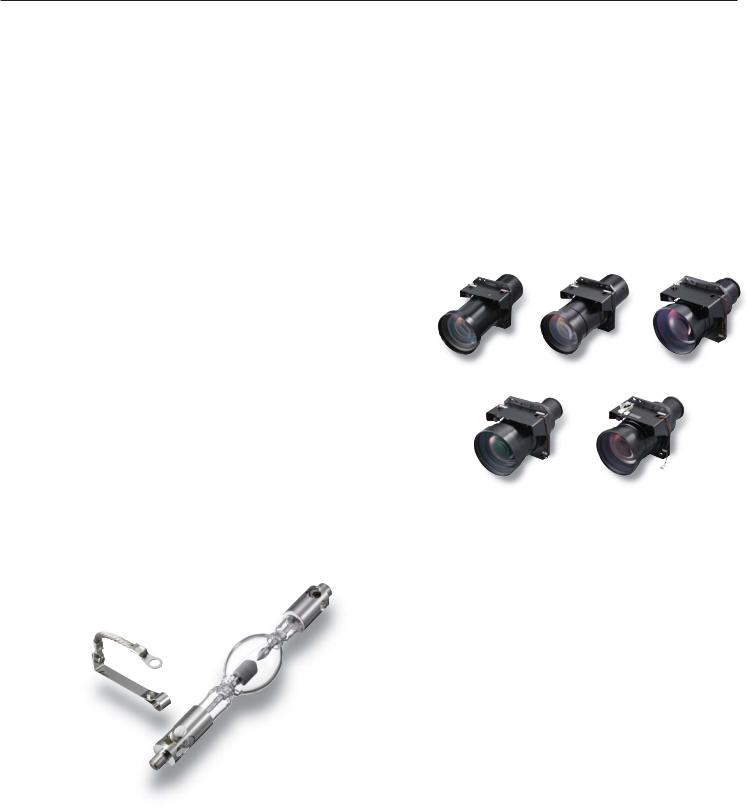
High 2000:1 Contrast Ratio
The SRX-R220 and the SRX-R210 offer a high contrast ratio of more than 2000:1* through the use of Sony’s unique SXRD device. The SXRD imaging device itself achieves a contrast ratio of over 4000:1.
This stunning picture quality makes the SRX-R220 and SRX-R210 ideal for applications in which dynamic range is essential.
The high contrast ratio has been achieved through two key technologies - the ‘Vertically Aligned Liquid Crystal’ system and an extremely thin liquid crystal cell gap.
* The contrast ratio is measured from a screen offering a gain of 1.0.
Xenon Lamp Provides Highly Bright
and Pure Light Source
The SRX-R220 provides a high brightness of 14 ft-L* on a 20-meter (65.6-foot) wide screen, and the SRX-R210 provides the same brightness on a 17or 14-meter** wide screen using a Xenon lamp.
A Xenon lamp, standard in all film projectors, provides pure, superb color tonal reproduction essential to meeting the stringent requirements of digital cinema. The SRX-R220 utilizes a 4.2 kW Xenon lamp, and the SRX-R210 uses a
3.0 kW** or 2.0 kW** Xenon lamp. These lamps satisfy the wide color range required for digital cinema by dispersion at a very flat and wide light spectrum.
*Measured at the screen center of a full pixel size (4096 x 2160) projection with 100 IRE white and a screen gain of 1.8. A ft-L (foot-lambert) is a unit of measurement for luminance. One foot-lambert equals 3.4262591 candelas per square meter.
** Tentative
Variety of High-quality Lenses
Five optional zoom lenses are available for the SRX-R220 and SRX-R210. All lenses utilize very large image circles that contribute to minimizing the optical vignetting that typically occurs on projector lenses, and to obtaining the highest possible values of MTF (Modulation Transfer Function). With these features, the optical systems of the SRX-R220 and SRX-R210 have the capacity to reproduce resolutions higher than 4K, which is necessary to project 4K contents exactly at 4K-resolution. In addition, these lenses are designed to minimize chromatic aberrations using Sony’s accumulated technical knowledge.
LKRL-Z114C |
LKRL-Z116C |
LKRL-Z117 |
LKRL-Z119 |
LKRL-Z122 |
Variety of Interfaces
The SRX-R220 and SRX-R210 support a wide variety of signal formats including the 12-bit X’Y’Z’ signal that is stipulated in the DCI specification. 10-bit 4:4:4 RGB and 10-bit 4:2:2 YPbPr signal formats are also supported for playback of other alternative contents.
•Two channels of SRLV which are used for connection to the Image Media Block (for 4K projection: 4K DCP).
•A dual-link HD/DC-SDI input that accepts any of the following signals: SMPTE 372M dual-link HD-SDI (4:4:4), SMPTE 292M HD-SDI (4:2:2), dual-link DC-SDI (RGB 4:4:4), DC-SDI (YPbPr 4:2:2), or 12-bit (X’Y’Z’ 4:4:4) signals (for 2K projection: 2K ODS (Other Digital Stuff), etc).
•A DVI interface that accepts DVI signals for up to 2048 x 1080 at 60 Hz (for 2K projection: 2K ODS , etc).
|
Resolution |
|
Remarks |
1 |
1024 x 768 at 60 Hz (XGA) |
VESA |
|
2 |
1280 x 960 at 60 Hz (SXGA1) |
VESA |
|
3 |
1280 x 1024 at 60 Hz (SXGA2) |
VESA |
|
4 |
1400 x 1050 at 60 Hz (SXGA+) |
VESA |
|
5 |
1600 x 1200 at 60 Hz (UXGA) |
VESA |
|
6 |
2048 x 1080 at 60 Hz (DC) |
|
|
7 |
1920 x 1080 at 24 Hz (HD) |
|
|
8 |
2048 x 1080 at 24 |
Hz (DC) |
|
9 |
1920 x 1200 at 59.95 Hz Reduced Blanking (WUXGA) |
VESA |
|
10 |
1920 x 1080 at 60 |
Hz (HD) |
EIA/CEA-861B |
11 |
2048 x 1080 at 48 |
Hz (DC) |
|
5
